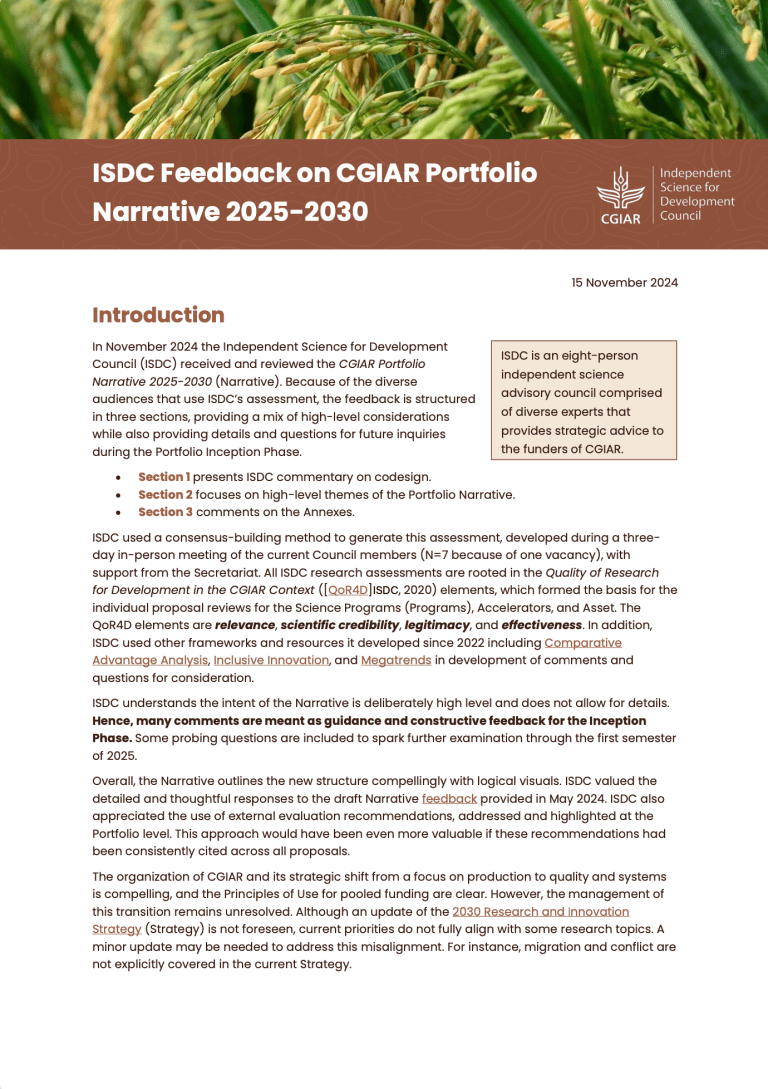The Independent Science for Development (ISDC) has released its third and final episode in a series on comparative advantage (CA). The series, Towards a Comparative Advantage Framework for One CGIAR, takes a comprehensive look into the ways a CA analysis approach can potentially lead to mutually beneficial partnerships. In doing so, a CA analysis can improve CGIAR’s effectiveness through specialization by redirecting scarce resources toward the System’s relative strengths.
This episode features two experts in the field of economics. Notably, Professor Christopher Barrett, Cornell University, and Professor Joshua Graff Zivin, University of California San Diego, discuss the ways organizations like CGIAR can adopt CA practices and how it can lead to beneficial results in research and innovation.
In this episode, the experts discuss the possible sources of CA and how broad categories—incentives, human capital, biophysical capital, and social capital—can assist CGIAR to identify outputs where the organization is likely to have CA. Meanwhile, the pair outline four key steps of a CA analysis and discuss the importance of deploying resources in the most effective manner.
The theory of CA states that organizations with shared goals can benefit from specializing in the production of goods and services if they have a lower opportunity cost and engage with partners. It emphasizes that even if an organization is the most efficient in producing goods and services compared to another organization, it can still benefit by focusing on a production area with the lowest opportunity cost.
In this context, the ISDC series aims to put the concept of CA to effective use in research portfolio management at all levels of CGIAR. Therefore, the adoption of a CA analysis can produce a more streamlined, purposive, and intentional research portfolio. Beyond portfolio management, pushing CA thinking can help with positioning CGIAR at the frontier of agricultural research for development.
If you want to learn more about CA and how it can be used to drive innovation and efficiency, we invite you to check out the other episodes in the Video and Podcast series.



